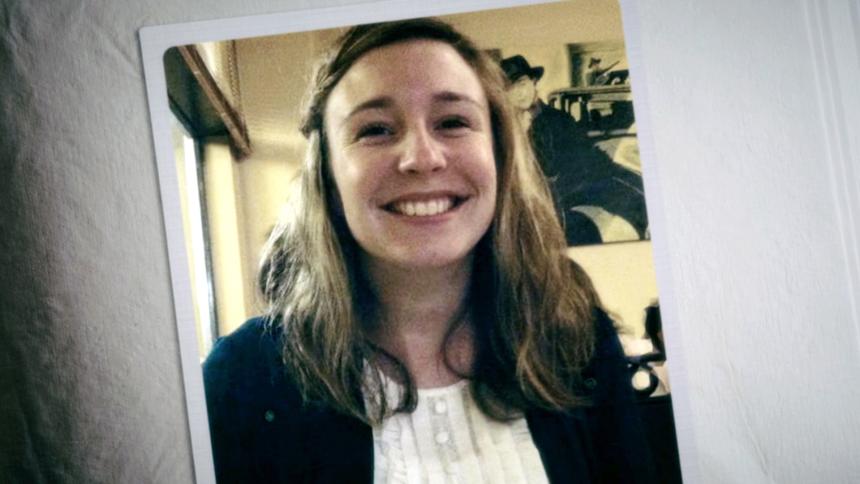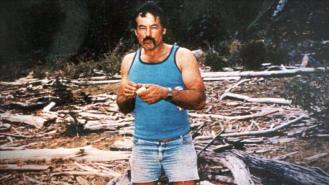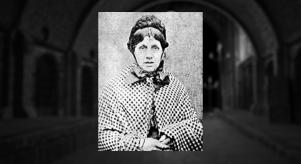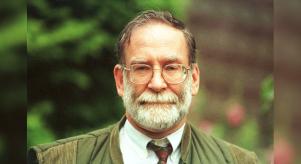
Vincent Stanford: Which twin brother committed murder?
Natural Born Killer is the definitive story of how the police stopped a serial killer in his tracks. School janitor Vincent Stanford was on his way to becoming Australia’s worst serial killer, following the brutal murder of bride-to-be Stephanie Scott, and a range of plans to murder many others. The series is available on demand and to stream on Crime+Investigation.
Stephanie Scott had everything to live for. The 26-year-old teacher from the small town of Leeton, Australia, was days away from her dream wedding when she disappeared on Easter Sunday in 2015.
Remembered for her warm smile and devotion to her students, Stephanie’s disappearance not only triggered an agonising search of Leeton and the surrounding area but revealed a calculated killer who thought he could outsmart justice.
This is where the story gets interesting. Catching her killer hinged not only on the role of DNA but the existence of an identical twin.
A vanishing bride-to-be
A dedicated teacher, Stephanie left her family home on Easter Sunday to finish some work at Leeton High School. She never returned. Calls from her fiancé, Aaron Leeson-Woolley, went unanswered and after several hours, panic set in. By the next morning, her family had contacted police.
The search started with an ominous clue: Stephanie’s red Mazda was found abandoned in a field. Inside, her purse and keys were untouched. News travels fast in small towns and Leeton was no exception. The community rallied to find her, with hundreds of volunteers combing through farmland and bushland.
Everyone was hoping for a tearful reunion. Unfortunately this wasn’t the case.
The cleaner who knew too much
Within days, police turned their attention to Vincent Stanford. The 24-year-old cleaner also worked at Leeton High School but unlike Stephanie, harboured a troubling reputation. Something about him unsettled people — his aloofness, his mood swings and the way he avoided eye contact.
As investigators pieced together Stephanie’s movements, Stanford’s behaviour raised alarm bells. He had called in sick to work the day after her disappearance and offered a weak excuse when questioned. Police also tracked down surveillance footage showing his car heading toward bushland near Griffith the night Stephanie vanished.
The final nail came when police discovered traces of blood in a storage room at the school. But there was a catch. The DNA profile matched not just Vincent Stanford, but his identical twin, Marcus.
The twin dilemma
Identical twins share the same DNA. It’s usually not an issue, until your twin is being accused of murder. Both brothers were questioned, and while Marcus had a strong alibi, Vincent’s story began to unravel. Investigators leaned heavily on circumstantial evidence to pinpoint which twin was responsible. Vincent had access to the school that day, a suspicious timeline, and, most critically, no alibi.
This was no spontaneous crime. Evidence suggested premeditation. Vincent had purchased cleaning supplies beforehand and, chillingly, had researched methods of disposing of a body. The story became clearer when Stephanie’s charred remains were found in a remote area. Vincent had tried to cover his tracks, but he left behind enough clues to seal his fate.
The grisly discovery
The final breakthrough came when a farmer near Griffith stumbled upon burnt remains and personal items tied to Stephanie. Among them was her engagement ring, a harrowing symbol of the life she’d been so close to beginning.
Police traced Vincent's movements and found receipts for fuel purchased near the crime scene. He’d tried — and failed — to use the fuel to erase the evidence.
A predator unmasked
Vincent Stanford’s cold and detached demeanour was on full display during the trial. Psychologists described him as a manipulative predator, someone who sought power over others to mask his own inadequacies. His motivations weren’t entirely clear, but the brutality of his actions left no doubt about his intent.
The defence leaned heavily on the DNA ambiguity. But eventually the mountain of circumstantial evidence proved overwhelming. Stanford eventually confessed, sparing Stephanie’s family the pain of a drawn-out trial.
The legacy of loss
Stephanie’s murder devastated her family and sent shockwaves through the town of Leeton and across Australia. Like the controversial Lindy Chamberlain case and the Ivan Milat murders, the story captured nationwide headlines.
Stephanie’s parents, Merrilyn and Robert Scott, turned their grief into action, founding programs to raise awareness about violence against women. They also campaigned for stronger background checks for school employees, hoping to prevent similar tragedies.
On what would have been Stephanie’s wedding day, hundreds of friends, family and community members gathered for a candlelight vigil. The ceremony was held under the fading light of a rural sunset and was both a tribute to Stephanie’s life and a collective reckoning with the senselessness of her death.
Lessons from a murder
Vincent Stanford’s capture and conviction showcased the power — and limitations — of modern forensic science. DNA alone couldn’t solve the case. Ultimately it was meticulous police work and their ability to establish a clear timeline and acquire damning evidence.













